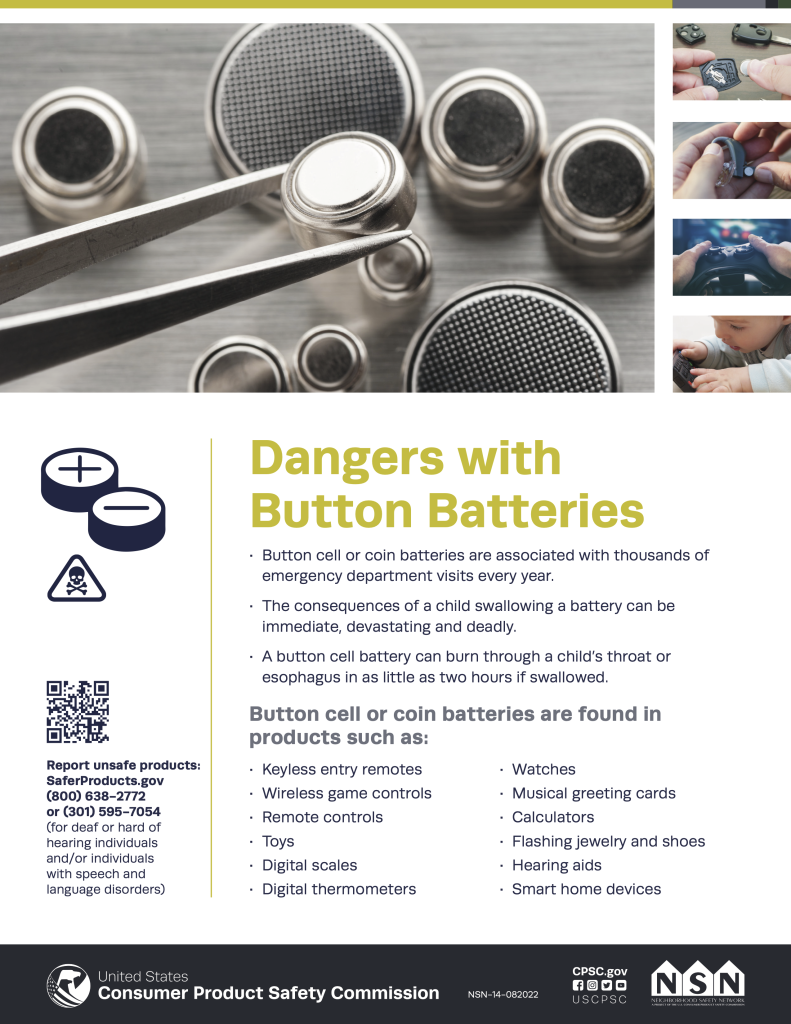
INDIANA — Small but powerful button cell batteries, commonly found in household items like remote controls, watches, thermometers, hearing aids, and children’s toys, pose a serious safety risk to young children. A recent investigation by Consumer Reports reveals that these batteries, often hidden in everyday products, can be dangerously accessible to kids, leading to life-threatening injuries or even death if swallowed.

According to the investigation, nearly one in three of the 31 household products reviewed contained button or coin cell batteries that were easily reachable. Alarmingly, half of these products lacked warning labels, and many did not adequately communicate the severe health risks posed by these small batteries.
The dangers of button and coin cell batteries go beyond choking. If swallowed, these batteries can cause chemical burns, poisoning, and internal injuries. When ingested or inserted into the nose or ear, they can become lodged in a child’s throat or esophagus, often requiring surgery to remove and causing long-term damage. Ingesting a battery can result in severe chemical burns within hours, making immediate medical attention critical.
The Consumer Product Safety Commission (CPSC) reports more than 54,000 emergency visits and 25 deaths related to button battery incidents from 2011 to 2021. Most of these incidents involved children aged six or younger, underscoring the importance of heightened vigilance among parents and caregivers.

One legislative measure aimed at improving safety is Reese’s Law, passed in 2022, which mandates stronger safety standards for button and coin cell batteries in consumer products. The law is named after Reese Elizabeth Hamsmith, an 18-month-old girl who tragically died after swallowing a button battery. Despite these efforts, experts caution that the law does not cover toys regulated under separate standards that many believe are too weak.
Parents are urged to take extra precautions and check which home products contain button or coin cell batteries. Make sure those battery compartments are secure. Opt for well-known, reputable brands that prioritize safety when buying new toys.
In response to growing concerns, battery manufacturers such as Energizer and Duracell have introduced safer alternatives. These batteries feature a bitter coating that helps alert parents if a child swallows one. The coating turns a child’s mouth blue upon contact with saliva, providing an early warning to parents.
Safety experts recommend storing batteries and products with button cells out of children’s reach and ensuring that battery compartments are secure. Parents should inspect toys and other products regularly for faulty or flimsy compartments and dispose of any items that could pose a risk. If a hazardous product is identified, it should be reported to the Consumer Product Safety Commission at saferproducts.gov.
The tragic death of Reese Hamsmith has underscored the urgent need for improved safety measures, and experts urge parents to be proactive in preventing button battery-related injuries.







.png)











